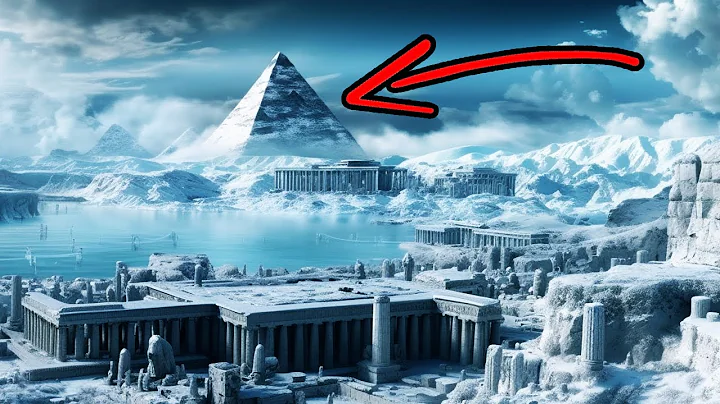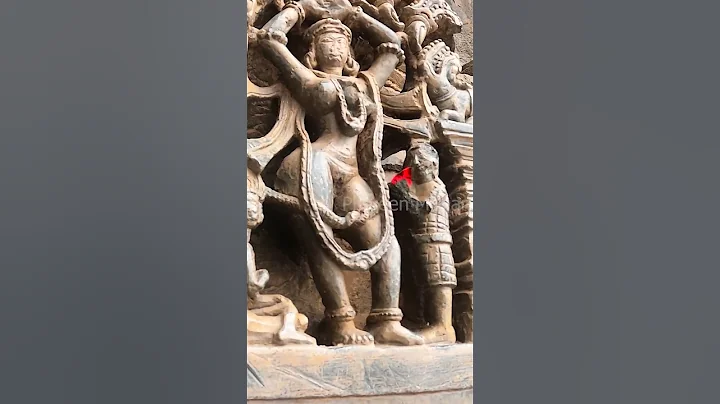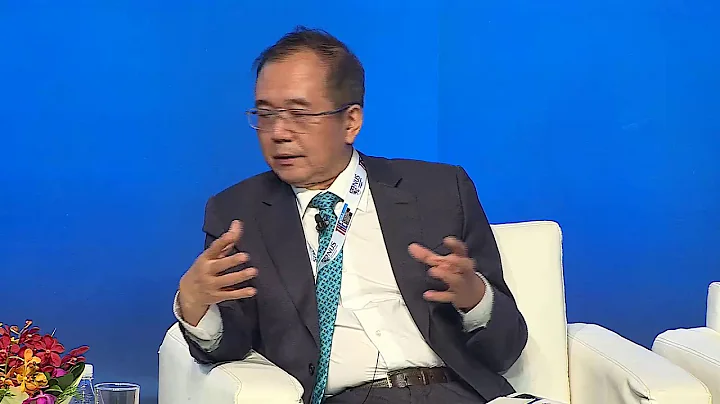China has countless places of interest and historic sites, most of which are marvelous and beautiful. Some are treasures left by the nature of heaven and earth, while others are formed by the hard work of the ancients thousands of years ago.
Every piece of land and every landscape has hidden legends and stories that are unknown to the public, and is covered with ancient and long history. They are majestic and magnificent, so people can't help but want to uncover the mysterious veil.

Since ancient times, many scenic spots have been inseparable from people's religious beliefs. For example, the ancients believed in Buddhism and believed deeply that Buddha could save all sentient beings.
As a result, ancient monuments that symbolize piety everywhere appeared on the territory of China.
In ancient times, people liked to carve Buddha statues in order to pray sincerely. When looking at the Buddhist statues in China, Sichuan's Leshan Giant Buddha is even more talked about.
The Leshan Giant Buddha is the largest cliff-carved statue in China and is also listed as a 5A tourist attraction.
In addition, the Leshan Giant Buddha also hides a legend from more than a thousand years ago. In 162, the government repaired it and accidentally discovered a hole in its heart.
Now, let us uncover the mysterious veil of the Leshan Giant Buddha and discover its secrets that have been unknown for thousands of years.
Lingyun Monuments
Leshan Giant Buddha is also known as Lingyun Giant Buddha. It is also called "Lingyun Giant Buddha" because it is located next to Lingyun Temple and sets off each other with Lingyun Temple.

In addition, "Ling Yun" also appropriately described the height and magnificence of the Giant Buddha. The Leshan Giant Buddha is 71 meters high and is the largest cliff-carved statue in my country.
It is located at the intersection of three major rivers: Dadu River, Qingyi River and Minjiang River. It is also because of such a special geographical location that the Leshan Giant Buddha has a reason to appear in this world.
Such a spectacular stone statue naturally took countless generations of hard work. The Leshan Giant Buddha was excavated in the first year of Kaiyuan of the Tang Dynasty and completed in the 19th year of Zhenyuan, a total of ninety years.
You can imagine how spectacular and amazing a large project that took nearly a hundred years must be. Even after thousands of years, the Leshan Giant Buddha is still standing majestic.
For thousands of years, the Leshan Giant Buddha located in Shu has always been people's belief. stands almost in the clouds, listening to the voices of generations, and staring at the ups and downs of the world with compassionate eyes.

From the poem "Big Statue Stone", we can see people's praise and respect for the Leshan Giant Buddha:
The Zhenjiang River is so majestic, and the mainstay is the only barrier in the river.
The stone wall appears from the sky, and the cloud roots are half in the water.
The golden body stands straight against the blue sky, and the jade trees can only be seen by daylight.
The eternal universe should not be destroyed, the energy of the divine Guang Yue has been completed for the first time.
Many future generations can’t help but wonder why the ancients thousands of years ago worked so hard to build this giant Buddha? As we mentioned above, the appearance of Leshan Giant Buddha is closely related to its special geographical location.
Thousands of years ago, the Minjiang River, Qingyi River, and Dadu River flowed extremely fiercely. During summer floods, this situation intensifies. The ferocious river water capsizes ships again and again, killing countless people. Therefore, there are often rumors among the people that water monsters kill innocent people indiscriminately.

At that time, there was a Zen master named Haitong. He was very sad when he saw this situation, so he proposed to build a giant Buddha in order to seek the protection of the giant Buddha and save all living beings. He gathered manpower and material resources everywhere, hoping to complete this major project as soon as possible.
However, before the completion of the Big Buddha, Zen Master Haitong passed away. At that time, the Big Buddha had just been built up to the shoulders. The death of Zen Master Haitong caused this major project to stall for a time.
Many years passed. Zhangqiu Jianqiong, the governor of Jiannan and Xichuan, began to donate his salary to fund the project. So the long-awaited project was started again. The disciples of Zen Master Haitong led the craftsmen They continue to fulfill their master's wishes during his lifetime.
Although the example of the Jiedushi of Jiannan and Xichuan is very touching, how could it be possible to complete such a huge project as the Leshan Giant Buddha with only the salary of a small official?
Fortunately, the reasonable court immediately allocated the sesame salt tax, and the progress of the project was greatly accelerated. Zhangchou Jianqiong became the first continuation builder after Zen Master Haitong.
But the good times did not last long. When the Buddha was built to the knees, the project was stalled again due to Zhangchou Jianqiong's transfer.

Until forty years later, with the salary donated by Wei Gao, the Jiedushi of Jiannan and Xichuan, the Leshan Giant Buddha was able to be built again.
Ninety years have passed, Tang DezongIn the 19th year of Zhenyuan, the Leshan Giant Buddha was truly completed.
We can see how difficult the process of carving this giant Buddha was. Not only was the process tortuous, but it also required the hard work of three generations.
A surprise discovery of the treasure cave
The majestic Leshan Giant Buddha has been standing in Shu for more than a thousand years. During this period, it must have withstood countless winds and rains. It is conceivable that the Leshan Giant Buddha has suffered the vicissitudes of history and has never regained its original appearance. .
In order to protect our country's historical sites, the government allocated special funds in 1962 and decided to carry out a comprehensive renovation of the Leshan Giant Buddha. During this repair process of , people have discovered a lot of gains.

In 1962, the relevant personnel responsible for repairing the Leshan Giant Buddha quickly came to Shu. Because the construction period was not long and the amount of work was huge, they quickly took action in an orderly manner.
They were many and divided into different teams in order to repair different parts of the Leshan Giant Buddha.
Huang Gaobin and Robo Heng were assigned to repair the chest of the Leshan Giant Buddha. One day, while they were busy working, they accidentally discovered the secret of the Leshan Giant Buddha.
They found a stone door at the heart of the Leshan Giant Buddha's chest and couldn't help but exclaimed because they were born and raised in Leshan and had heard the legend that the Giant Buddha had a treasure cave since they were children.
They expected that behind this stone door was the legendary treasure cave. Although they were curious, they still did not dare to act rashly. They quickly reported the situation to the team leader, who immediately reported the matter to the government.
People who learned about this were very excited. Not to mention the excitement of the people in Leshan, experts in the archaeological field were even more delighted when they heard about this. They quickly formed an archaeological team.

Guo Moruo, who is both a Leshan native and an archaeologist, is also very excited. He wants to join the archaeological team to explore the treasure cave. However, due to his busy work schedule, he could not go to Sichuan. Unfortunately, Guo Moruo sighed several times.
This newly formed archaeological team excitedly arrived at the stone door at the heart of Leshan Giant Buddha. They guessed that there must be a world behind the door, but when they opened the stone door, they were greatly disappointed.
Because the scene in the cave was different from what they imagined. There was no rare treasure hidden at all, but it looked empty. There are only some scrap metal scattered on the ground of the cave, which is obviously not of great value.
Archaeological experts carefully observed and explored around, and found only the stone sealing the cave that recorded the reconstruction of Tianning Pavilion in the Song Dynasty. Apart from this, there was nothing else of historical value.
So archaeologists speculated that during the Song Dynasty, someone might have entered this treasure cave and stolen the more precious things.
When the archaeologists were disappointed, they found new clues in the seemingly worthless scrap iron.

After careful observation, they found that these old scrap iron kettles were actually gilt copper kettles. They only looked so shabby because of their age.
And some of the lead sheets on the ground are the more precious lead sheets and iron scrolls in Buddhism.
But you must know that this cave is located in the heart of the Buddha.Historically, this kind of cave located in an important location was also called a "hiding dirty cave". There must be extremely precious treasures hidden inside. It is impossible that there are only some scattered gilt copper pots and lead-wrapped iron scrolls left.
There is also a legend often circulated among the people of Leshan. Legend has it that Zen Master Haitong once hid donations and treasures donated by people in a cave.
Another legend says that Tang XuanzongLi Longji once obtained the relics from Lingyun Temple, and he hid them in the cave of the Leshan Giant Buddha. However, archaeologists surveyed it with instruments and found nothing. A shadow of the treasure.
Then there is only one answer. This dirty hole has been cleaned up long ago.

It can be said that these archaeologists were extremely excited and returned disappointed. Their disappointment actually had a reason.
In addition to the Leshan Giant Buddha, there are many historic sites in our country. Archaeologists once found the pomegranate skirt and relics of Wu Zetian in the underground palace of Famen Temple. And the Leshan Giant Buddha is so majestic, how could there be no treasures at all? Woolen cloth.
Since there are no treasures, why did our ancestors find it difficult to build a hole to hide dirt in such a dangerous location? really baffles archaeologists.
The historical value of Leshan Giant Buddha
Although there is no treasure to be found in the hidden cave of Leshan Giant Buddha, its historical value and significance can never be ignored.
In that era of backward technology, it was a feat for people to carve such a majestic Buddha, and the wisdom of the ancients was also fully revealed.

In the process of carving the Buddha, the ancients also thought of how to better protect the Buddha's body.
Therefore, the Leshan Giant Buddha has a very clever and secret drainage system, which protects the Buddha's body to a great extent.
According to relevant information: "Among the 18 layers of conch buns on the head of the Buddha, there is a horizontal drainage ditch on the 4th, 9th and 18th floors. There are also ditches on the left side of the chest and the back of the right arm. The ditches are connected. Behind the two ears and against the cliff, there are caves connected to the left and right; there are holes at each end of the back of the chest, but they are not connected to each other. These ditches and caves form a scientific drainage, moisture isolation and ventilation system to prevent the erosive weathering of the Buddha."
From this we can see how meticulous and thoughtful the builders of the Buddha were.
In addition, the Leshan Giant Buddha also has certain religious value and significance. Because Maitreya Buddha was highly respected in the Tang Dynasty, the Leshan Giant Buddha was also a Maitreya Buddha.
The Buddhist significance of "Maitreya Buddha" is very important, because the appearance of "Maitreya Buddha" means peace in the world.

At the beginning, Wu Zetian ordered the fabrication of the "Dayun Sutra" to promote that she was the reincarnation of Maitreya Buddha. Because of this, in the feudal era where men were superior to women, Wu Zetian was able to gain the support of the people and successfully ascend to the throne.
It can be said that Wu Zetian knew how to use religious beliefs and was extremely smart.
This is also the reason why Zen Master Haitong chose Maitreya Buddha as the carving prototype. The construction of Leshan Giant Buddha also contains people's prayer for "peace in the world", because people often died at the confluence of three rivers at that time..
Therefore, the people hope that the " water ghost " will disperse as soon as possible and be suppressed as soon as possible.
The Leshan Giant Buddha symbolizes happiness and hope, and entrusts the ardent wishes of countless people.
Maitreya Buddha culture has spread far and wide in China, and there are three stages of development and change. The Leshan Giant Buddha is an "ancient Maitreya Buddha" with Chinese characteristics. It does not have the characteristics of "broad shoulders and thin waist" of Indian Buddha statues, but is very strong.

This shows that the construction of the Leshan Giant Buddha is still combined with the aesthetic views of the Tang Dynasty. As we all know, the Tang Dynasty regarded fatness as beauty, and the "plumpness" of the Leshan Giant Buddha reflects this.
The Leshan Giant Buddha does not adopt the "lotus posture" of Indian Buddha statues. Its sitting posture is very stable, and its feet naturally droop, giving people a sense of solidity.
Because it was originally built to suppress water demons and stabilize people's hearts, the uniqueness of the Leshan Giant Buddha has successfully calmed people's hearts.
In short, the Leshan Giant Buddha is also a breakthrough in my country's inherent image of Maitreya Buddha. This giant Buddha is not copied. It is a giant Buddha with profound Chinese characteristics.
Zen Master Haitong and other subsequent builders had novel ideas. They combined the aesthetic tendencies of the dynasty with the purpose of saving all sentient beings and suppressing floods, and created such a unique Leshan Giant Buddha.
Conclusion
The flow of water at the intersection of Sanjiang is fierce, and it gets even worse during the flood season, which has caused many water traffic accidents. In fact, this is caused by the geographical location, but the people of Shu at that time thought it was a "water demon". Make trouble.

Zen Master Haitong led the craftsmen to build the Leshan Giant Buddha, which took three generations of hard work and lasted ninety years. But in fact, the Leshan Giant Buddha has little effect in calming floods.
We can only say that the ancients at that time lacked scientific knowledge, so they believed in the "water demon". Although the construction of the Leshan Giant Buddha did not play a big role, its value cannot be ignored. It has given the people a kind of hope, and it also carries the sincere prayers of countless believers.
If it weren’t for the painstaking construction of the ancients, we might not be able to see such a majestic Buddha today. Lingyun Buddha is so spectacular that it is considered a huge and difficult project today.

We can't help but admire the ancients at that time. In that feudal and backward era, they probably just gritted their teeth and relied on endurance day after day to build the Leshan Giant Buddha.
In addition to respecting them, the only thing we can do in the future generations is to carefully protect these places of interest and make their magnificence visible to future generations.





















